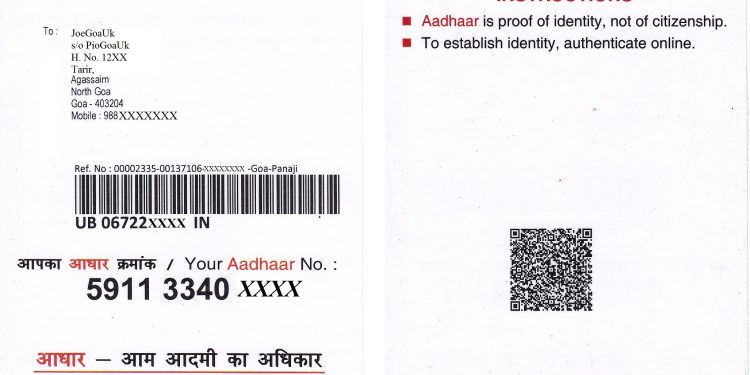Easy on the Finances: Aadhar Card Digitization

What is an Aadhar Card?
An Aadhar is a unique 12-digit identification number provided to every Indian citizen and serves as proof of identification. The Aadhar card was an initiative by the Indian government, along with Unique Identification Authority of India. This card facilitates access to various facilities that the government provides to people, including the Direct Benefit Transfer of subsidies. The identification number is randomly assigned and does not, in any manner, discriminate an individual on the basis of his/her caste, religion etc. With the introduction of the Aadhar ID, there has been a successful attempt at inclusion of the country’s 1.2 Billion population. A great deal of effort has been involved in getting such a large population registered to the centre’s database.
Where the costs are greater than benefits
Despite being successful in such a laborious task, the government has incurred a major expenditure in making it happen. But the question is, are the costs justified, or do they well exceed the benefits likely to accrue to the government? The Aadhar card was introduced during the tenure of the UPA government. At that time, it was mandatory to get the Aadhar ID. With the BJP government taking over, the status was changed from mandatory to voluntary since the incumbent believed that the expenditure involved (which was as high as 1000 Crore Rupees) was way too high, and that it created great scope for corruption. As a means of expenditure pruning, the government recently decided to introduce a digital version of the Aadhar Card as part of the Digital India initiative, that was launched by the Modi government.
Digital Aadhar: Pros
The digital version of the Aadhar is sure to bring down government expenditure, and at the same time, provide access to the Digital Locker which enables people to store various information pertaining to Voter ID, tax related documents among others. The primary purpose is to reduce people’s dependence on physical documents as the risk of loss and wear-and-tear is much higher when they are physically used. The digital locker is an effective mechanism that will make access easier through a secure online system.
Conclusion
The digital Aadhar may be an ambitious initiative by the government of India. But for a country like India, where a majority of people still have no access to computers and little/no knowledge as to how they are to be operated; the project may not have an overall desirable impact on the nation as a whole. And for those who do have access, safety and security concerns may prevent citizens from registering online. This can potentially cause further losses for the government. The feasibility of such a plan, no matter how convincing it may sound, has to be considered from all points of view. In a country like India, a digital policy may not be accepted with open arms. If such initiatives are backed up by adequate training for those who are digitally illiterate as well as computer centres operated by the government at low cost, then the digital divide may no longer be a hindrance to programmes like the ‘Digital India’.
[Image Attribute: joegoaukextra4]


